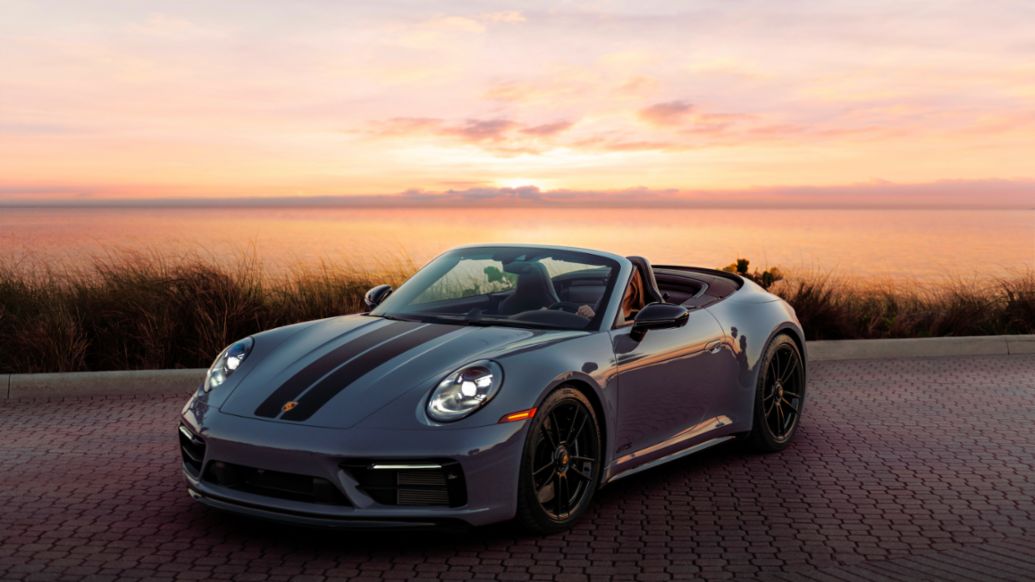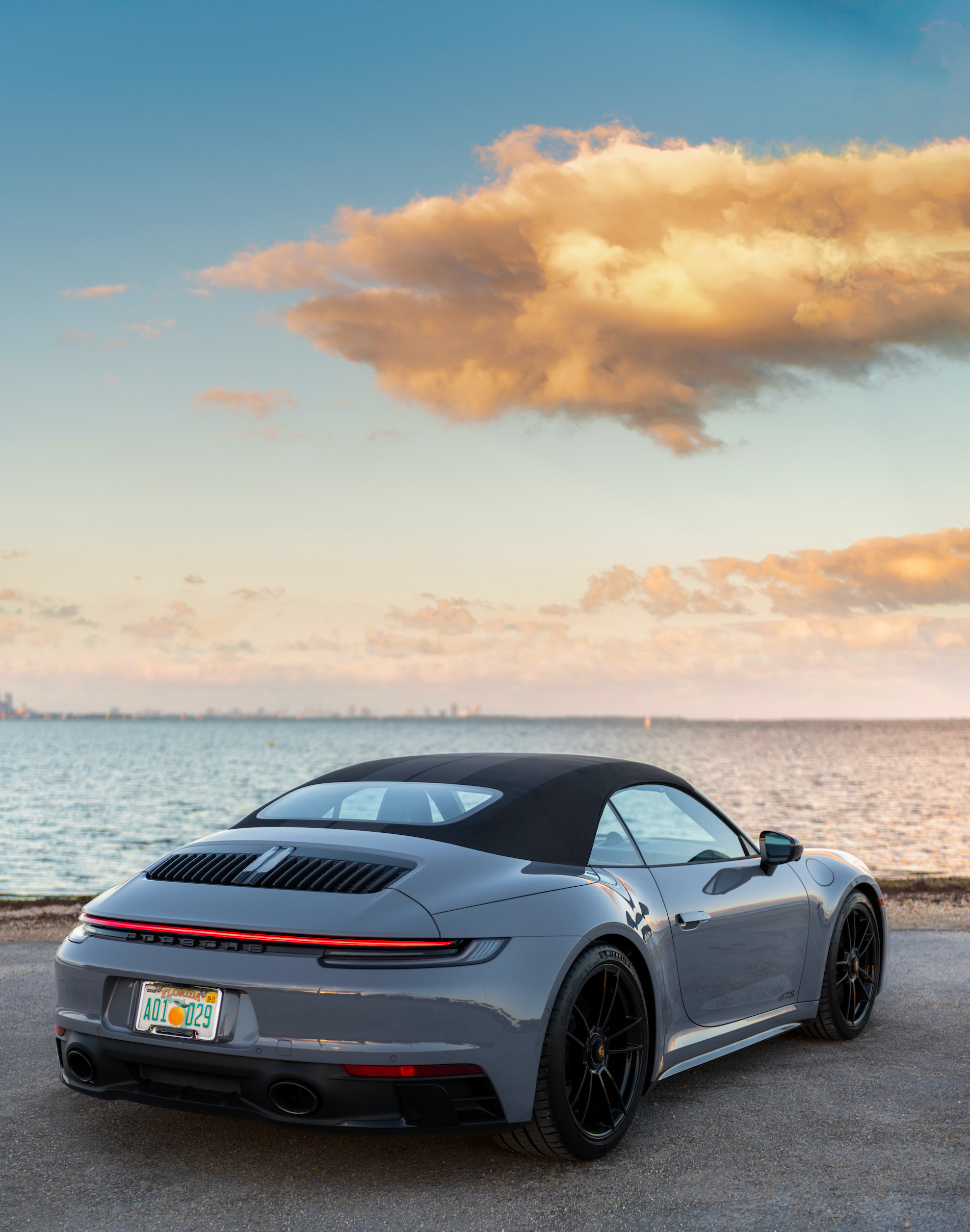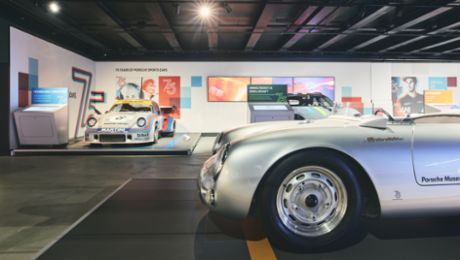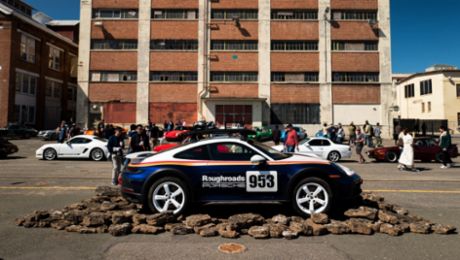Lake Nona, in Orlando, Florida, has a backstory not unlike that of Porsche. While 75 years ago Ferry Porsche was giving life to what would become the Porsche legend, with the 356 ‘No. 1’ Roadster, at the turn of the 21st century Joe Lewis was realising a plan to create a visionary new community. Lake Nona, just like the German sports car brand, was born out of a dream.
In the early 2000s, as Porsche engineers were deep in the company archives, dusting off notes on the Egger-Lohner C.2 Phaeton – the oldest surviving design of Ferry Porsche’s father, Ferdinand Porsche, which was powered by his 'Octagon' electric motor – Lewis and his team were working on a master plan for the nearly 44 square kilometres of forgotten land that the British businessman had bought in 1996.
What followed was Lake Nona's big boom, which started in 2010. Today, this parcel of land in south-east Orlando is home to about 18,000 people and is a living laboratory where start-ups, universities, large companies, and the public sector are discovering new 5G applications. The so-called 'gigabit community' has more than 40,000 km of fibre optics with superfast speeds, ultra-high bandwidth and low latency. This enables new discoveries in the areas of healthcare, autonomous mobility and retail experiences – and it accelerates the passage of innovations from ideas to experience and action in the community.
2010 also marked an important milestone
As for Porsche, 2010 also marked an important milestone for the brand. That year saw the start of production of the Cayenne S Hybrid, a car that marked the path of electric sports vehicles, which would bear its most important fruit in 2019 with the arrival of the all-electric Taycan.
Lake Nona, like Porsche, is in constant development. Filled with multicoloured, intelligent buildings that are ready for the future, it is a community where human wellbeing and climate change are playing a key role. It is home to the Verizon 5G Innovation Hub and KPMG, one of the four largest accounting firms in the world, which is investing nearly $450 million in a state-of-the-art building. The United States Tennis Association also established the world's largest tennis complex in Lake Nona, with 100 courts. “You also can't forget the Golf & Country Club, Nona Adventure water park, Boxi Park, Drive Shack, restaurants, high-tech movie theatres and a host of other attractions that would require a longer visit to see them all,” says a spokesperson at the tourism office, as the 911 Carrera 4 GTS Cabriolet rolls into town.
Reminiscent of the 356 'No. 1' Roadster
This particular sports car is perfect for a road trip exploring the heritage and innovation of both Porsche and the US. Not only does it make the most of the Orlando sunshine, but this icon of sports cars is celebrating 60 years in 2023. It is also reminiscent of the 356 'No. 1' Roadster that would become the first car to bear the Porsche name, 75 years ago on 8 June, 1948.
Today, on the streets of Lake Nona, it is met by the largest and most extensive fleet of autonomous public service vehicles in the US. These innovative buses are seen quietly cruising the streets while passengers hop on and off without having to pay for the service.
But it’s time to leave one of the most modern communities in America, and head to St. Augustine, the first city founded by Europeans and permanently inhabited in the United States. It’s a journey done best with the roof down and the sound system off – there is, after all, no better soundtrack than the 480 PS (353 kW) (911 Carrera 4 GTS Cabriolet (2023): Fuel consumption* combined (WLTP) 11.3 – 10.8 l/100 km, CO₂ emissions* combined (WLTP) 256 – 244 g/km, CO₂ class G ) of the three-litre six-cylinder flat-six.
From Daytona to St. Augustine
The perfectly paved I-4 highway heads to Daytona, where a visit to its legendary racetrack and museum is a must. There, Porsche has also written its own history since the year the circuit was inaugurated: on 5 April, 1959, the Argentines Roberto Mieres and Antonio von Döry won the 1000 km of Daytona in a Porsche 718 RSK. And since the 24-hour race began in 1967, the sports car manufacturer has become the most successful brand in its history: in addition to its 19 outright victories as a car and engine manufacturer, it can also lay claim to four additional wins solely as an engine manufacturer. From Daytona, the road continues towards St. Augustine, with Highway 95 turning into a long, straight stretch that takes a little over an hour to complete.
Like Porsche and Lake Nona, St. Augustine was also born from dreams – dreams that the Spanish, French and English voyagers shared when it came to discovering new worlds. The first to explore these lands was Juan Ponce de León (1513), but it was Pedro Menéndez de Avilés who founded the city on 8 September, 1565.
The Spanish heritage is immediately obvious on arrival in St. Augustine, with the castle of San Marcos, the construction of which began in 1672. The fortress bore witness to fierce battles against the English, who after the Treaty of Paris in 1763 took over the entire Floridian territory.
Today St. Augustine is a city of almost 15,000 inhabitants, most of whom make their living from tourism. To tour it, it is best to leave the 911 Carrera 4 GTS Cabriolet parked and explore the streets of its historic centre on foot. The gates of the old city are an ideal place to start, followed by a wander down Saint George Street to Treasury Street, which, at barely two metres wide, is probably the narrowest street in the US.
“Legend has it that the Spanish built it this way so that only two men could pass through at a time carrying a chest of gold from the port to the Spanish Royal Treasury or vice versa. No room for them to be attacked by men on horseback or in carriages,” explains Courtney Coogan, a St. Augustine tour guide.
Back in time
Churches of various religions and cemeteries full of legends such as Huguenot and Tolomato are reminders of the passage of the Spanish, French and English through these lands.
As the sun goes down, Flagler College, the Lightner Museum, the Cathedral Basilica of St. Augustine and the St. Augustine Distillery are in full glory. To visit the lighthouse and the beach, the 911 is needed.
In the evening, the historic Columbia restaurant, which opened more than 100 years ago, takes diners back in time, with its decoration, wine and tapas.

The following day Lake Nona beckons again, this time along the picturesque A1A highway that runs along Florida’s east coast. The beach, sea, breeze and seagulls are the perfect accompaniments.
As the 911 Carrera 4 GTS Cabriolet slows to a final halt, one of the autonomous electric buses emits a beep as it approaches otherwise silently. It brings the future of this community, and Porsche, back to mind. In terms of Lake Nona, in 2025 it is set to feature America's first vertiport – a hub for electric aircraft with helicopter-style takeoff and landing capabilities. In terms of Porsche, imbued as it is with performance-oriented DNA, the plan is to continue to be a pioneer in electric mobility. If the recently revealed Mission X concept car is anything to go by, the next 75 years of Porsche sports cars will have plenty of developments in store.



